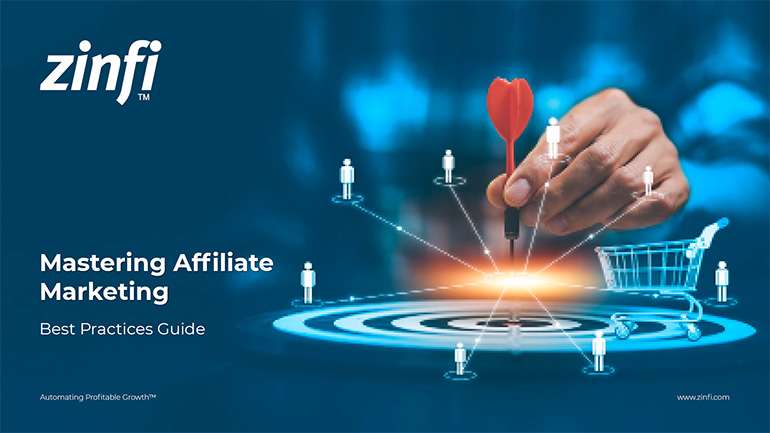Best Practices Articles

Lead Management. Everywhere Leads… How to Pick and Build the Right Systems
Once you have figured out your lead management strategy, structure and staffing plans, it‘s essential that you have the right systems in place to truly build a world-class lead management program for your channel partners. By “systems,” I actually mean three independent things: programs, processes and platforms. I use the plural versions of these words because they need to address every aspect of your channel lead management program, and it is never easy to fit in everything with a singular approach. In this article, we will explore how to best build the right systems for your lead management program.
In our earlier articles, we discussed how to pick different strategies, structures and staffing plans based on different types of products, market segments and buying motions. In this article, we will discuss lead management systems in generic terms because, in principle, building programs, processes and platforms is more or less universal. While the specific activities within each program, process or platform is a function of you the markets you serve, the products you sell and the staffing you provide, the approach to building systems is to a great extent the same across all variables. So let’s go ahead and break the concept of “systems” into three core areas and see how we can take the right approach for each:- Programs – Building a lead management program requires integration of multiple programs, which determine how you onboard, train, enable and reward partners. Without figuring out those sub-programs, it is awfully hard to think about lead management in isolation. On the other hand, without comprehensive strategy, structure and staffing plans for lead management, you cannot figure out these other related programs. That’s why it is essentially to work on an integrated program approach that considers how onboarding, training, enablement, lead management and rewards work together. Once you have aligned these sub-programs with your product types, market segments and partner types, you can then and only then move to the next level of building the right processes.
- Processes – Lead management requires a clear and focused strategy that specifies which leads you are going to distribute to which partners and why. The strategy should also specify how you will incentive partners to generate leads on their own to drive your sales. We discussed this integrated approach in an earlier article, and we also touched upon the dependencies of lead management programs on other sub-areas of channel management—e.g., partner onboarding, training, enablement and rewards. Therefore, when you are building a lead management process and determining how partners will submit leads to you and/or accept leads from you, you will need to clearly map out approval routing, notifications, alerts, etc. Even today, many companies are still managing these processes manually. That may be okay, at least until you scale to a certain point, but you will need to have to have the entire process clearly defined, whether or not you automate it.
- Platforms – As more and more business functions are automated, it makes sense to give channel management the same level of consideration. Forty years ago, enterprises started to automate their back-end processes, like manufacturing, logistics, inventory management and forecasting. This led to a fully automated and integrated financial system, which eventually led to the creation of sales and marketing automation platforms. However, those systems are inadequate for addressing your complex channel management needs, which are likely to change frequently. This is why, when you are investigating technology platforms for managing your channel, it’s vital that you understand the implications of taking a customer relationship management (CRM) system and attempting to modify it for the purposes of partner relationship management (PRM). I have shared in other articles why PRMs are better fit for channel management than CRMs, so I won’t repeat that argument here.
Best Practices Guidebook
 Winning with Partner Advisory Councils: Best Practices for Partner Engagement & Growth
Winning with Partner Advisory Councils: Best Practices for Partner Engagement & GrowthDownload Guide
 The Future of Partner Ecosystems Best Practices
The Future of Partner Ecosystems Best PracticesDownload Guide
 The AI Revolution: How Technology and Talent are Shaping the Future
The AI Revolution: How Technology and Talent are Shaping the FutureDownload Guide
 Top 105 Partner Management Metrics that Matter Best Practices
Top 105 Partner Management Metrics that Matter Best PracticesDownload Guide
 Mastering PRM Integration Best Practices
Mastering PRM Integration Best PracticesDownload Guide
 Building a Sales Partner Portal with Salesforce Best Practices
Building a Sales Partner Portal with Salesforce Best PracticesDownload Guide
 Building and Managing Partner Ecosystems Best Practices
Building and Managing Partner Ecosystems Best PracticesDownload Guide
 Mastering Co-Marketing and Co-Selling Best Practices
Mastering Co-Marketing and Co-Selling Best PracticesDownload Guide
 Transforming Partner Ecosystems Best Practices
Transforming Partner Ecosystems Best PracticesDownload Guide
 Mastering Partner Ecosystems Best Practices
Mastering Partner Ecosystems Best PracticesDownload Guide
 Mastering Partner Onboarding Best Practices
Mastering Partner Onboarding Best PracticesDownload Guide
 Partner Ecosystem Management Best Practices
Partner Ecosystem Management Best PracticesDownload Guide
 B2B Marketing in the Age of Intelligence Best Practices
B2B Marketing in the Age of Intelligence Best PracticesDownload Guide
 Multi-Partner Co-Selling Best Practices
Multi-Partner Co-Selling Best PracticesDownload Guide
 A Guide to Enhance Channel Sales Efficiency
A Guide to Enhance Channel Sales EfficiencyDownload Guide
 Mastering Affiliate Marketing Best Practices
Mastering Affiliate Marketing Best PracticesDownload Guide
 The Ultimate Guide to Channel Partner Management
The Ultimate Guide to Channel Partner ManagementDownload Guide
 Top 10 Trends in 2024 Partner Relationship Management
Top 10 Trends in 2024 Partner Relationship ManagementDownload Guide







